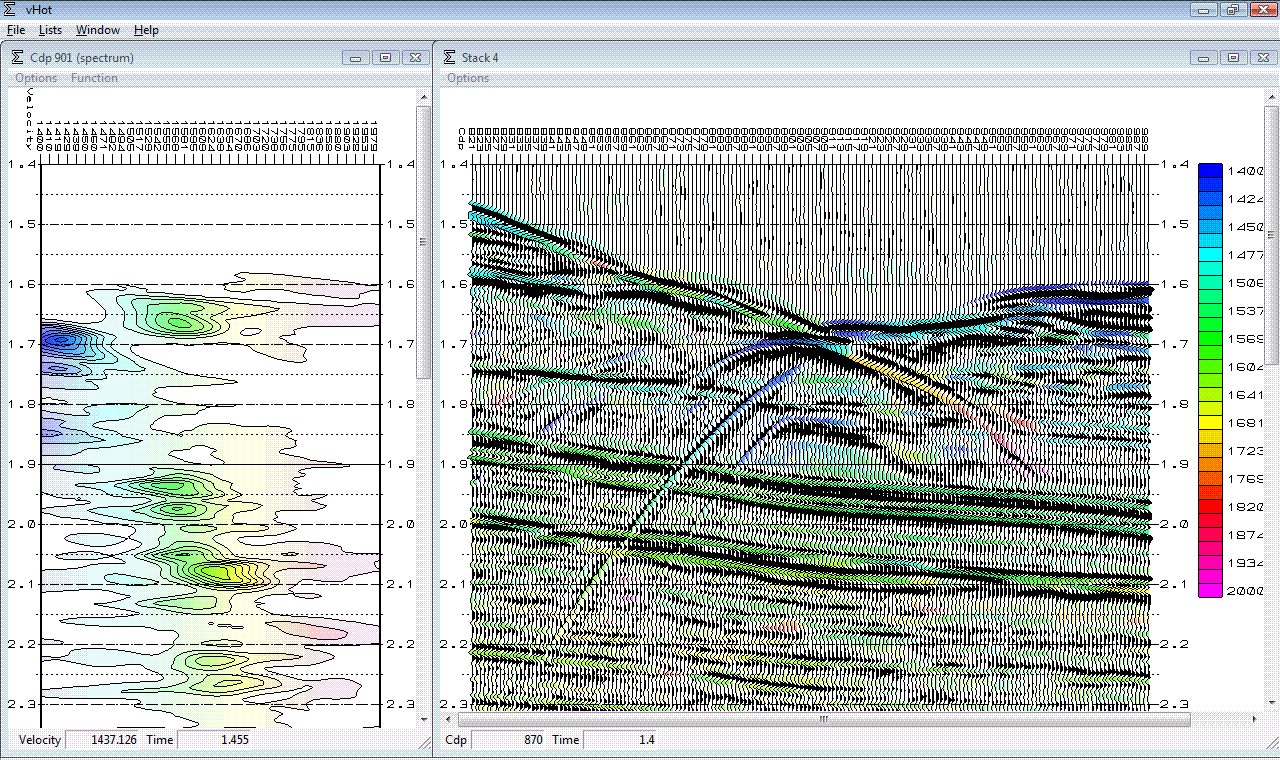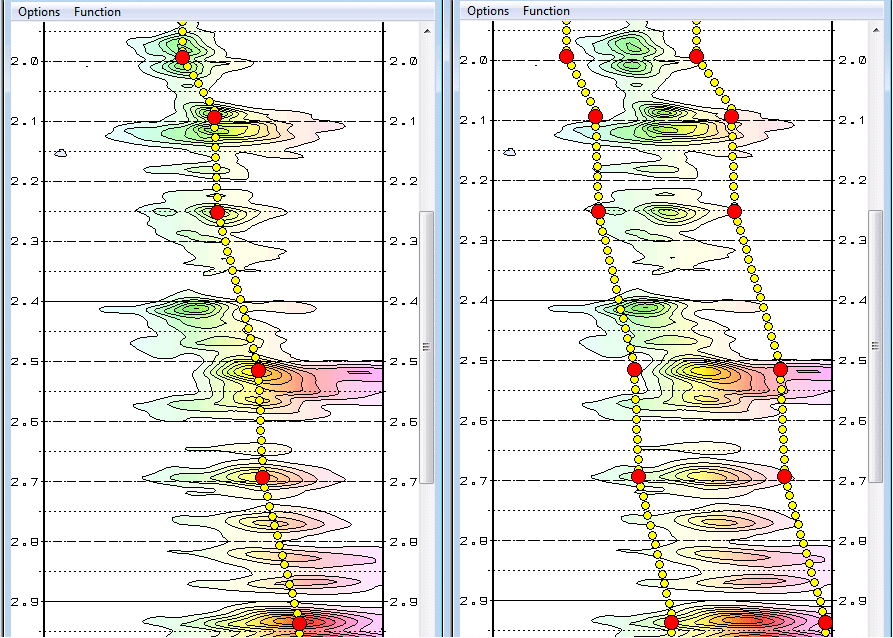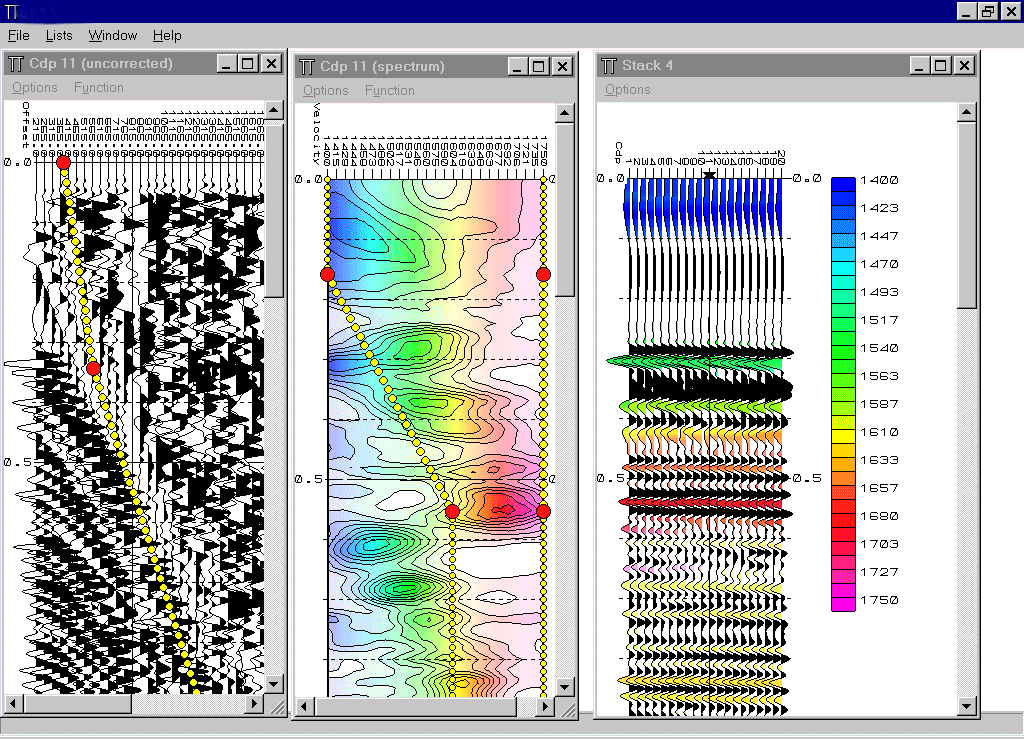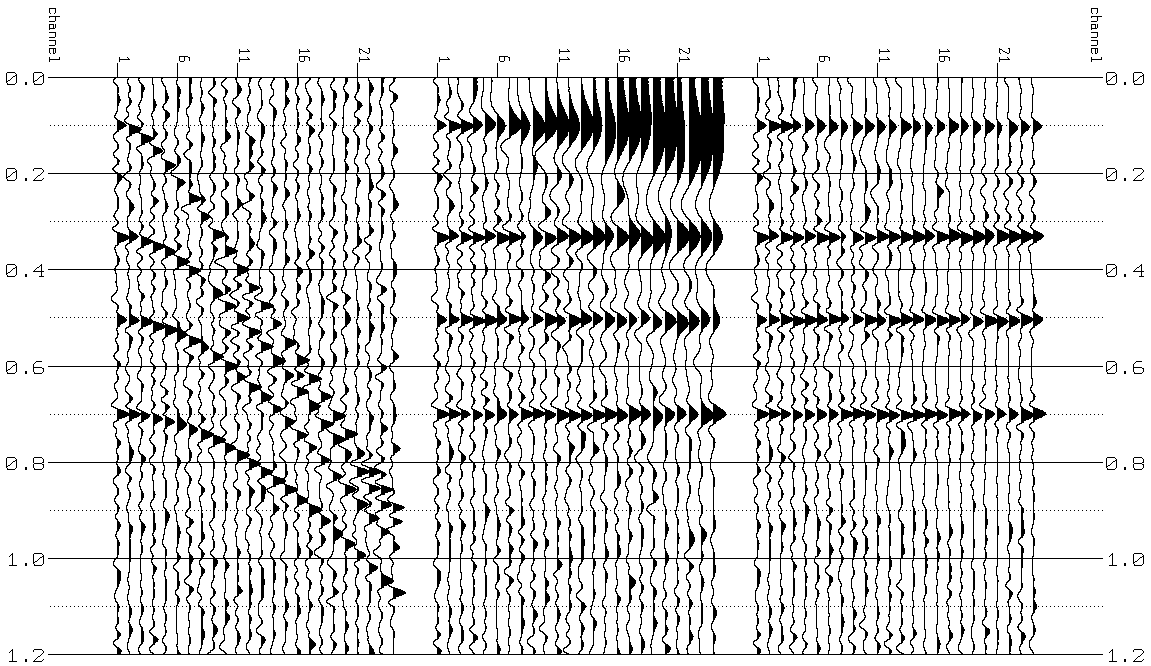Overview
Spex
reads cdp gathers and produces four types of display:
|
|
|
|

Mute and
velocity functions can be picked from the displays as appropriate.
|
▬▬▬¿▬▬▬ |
Velocity Functions
Spex
generalizes conventional dynamic corrections by allowing velocity passband functions ...

Where the
traces are dominated by coherent noise, the functions should be picked so as to
exclude this noise. This apart, the velocity bands can be chosen arbitrarily
wide - the stack will be at least as good as any conventional stack. Spex frees
you from having to pick detailed velocity functions.
The displays are optionally colour–coded by velocity. Each such stack display
will then show the estimated velocity at each stacked sample. The intensity of
each colour is proportional to the coherence at the corresponding sample. These
stack displays provide an immediate and striking view of the velocity field.
Here, a
mute is picked, and a velocity function is chosen that excludes slower events ...

|
▬▬▬¿▬▬▬ |
Stretch free NMO
By using
Spex, nmo stretch can be made insignificant – compare conventional nmo
corrections with Spex’s corrections:
